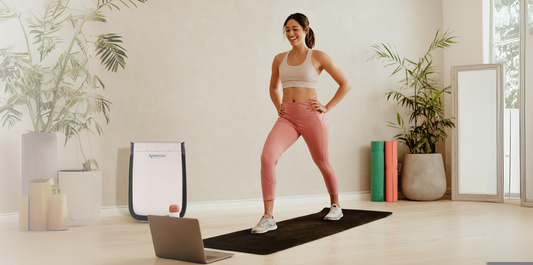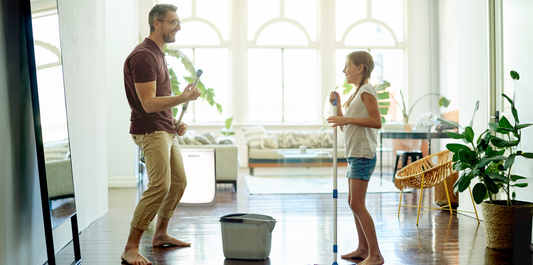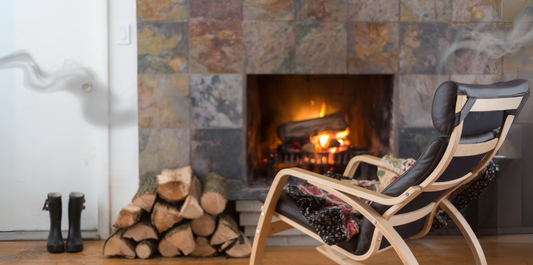Ever noticed how the smell of last night’s stir-fry still lingers in the morning? Cooking is part of daily life, but it often brings more than just delicious meals, it also releases smoke, grease, and strong odours that can affect the air quality throughout your home. In modern open-plan kitchens or smaller flats, these airborne pollutants don’t just stay in the kitchen, they spread!
While opening a window or switching on the extractor fan helps, it’s often not enough, and can be life-threatening, especially in winter or in homes without effective ventilation. That’s where an air purifier can make a noticeable difference.
What happens to air when you cook?
Cooking releases a mix of particles and gases into the air. Whether you’re frying, grilling, roasting, or baking, common pollutants include:
-
Fine particulate matter (PM2.5): these tiny particles can penetrate deep into the lungs.
-
Volatile Organic Compounds (VOCs): released from oils and ingredients, VOCs contribute to poor indoor air quality.
-
Nitrogen dioxide (NO2): especially from gas hobs, NO2 can irritate the airways and affect respiratory health.
According to the UK Government’s Clean Air Strategy 2019, cooking is one of the main sources of indoor air pollution in UK homes. Everyday routines—like searing meat, frying onions, or baking with oils—can significantly raise indoor pollutant levels.
The impact on health and comfort
Household air pollution caused by cooking is not just an inconvenience—it’s a serious health risk. According to the World Health Organization (WHO), approximately 3.2 million people die prematurely each year from exposure to household air pollution, which includes particulate matter and harmful gases released during cooking with solid fuels or kerosene. These pollutants inflame the lungs, impair immune response, and reduce oxygen delivery in the body.
Poor ventilation and consistent exposure to cooking emissions can contribute to significant health risks. Long-term exposure is linked to noncommunicable diseases such as ischaemic heart disease, stroke, chronic obstructive pulmonary disease (COPD), and lung cancer. For children, exposure almost doubles the risk of lower respiratory infections and contributes to nearly half of all pneumonia deaths in children under five.
In addition to health, household air pollution affects quality of life, particularly in enclosed or poorly ventilated spaces. Strong odours, eye and throat irritation, and the general discomfort caused by lingering smoke can diminish the comfort of your living space. Given these risks, reducing indoor air pollutants through practical solutions—like cleaner cooking habits and improved air filtration—is increasingly important.
Why ventilation isn’t always enough
It’s easy to assume that cracking a window or using a cooker hood does the trick. However, many homes—especially flats and rented properties—lack proper extraction systems or rely on recirculating fans that do little to filter out particles. During colder months or in urban areas where outdoor air may already be polluted, opening windows may not be a realistic or healthy option.
Even in homes with ducted extractor fans, their efficiency often depends on proper maintenance and airflow dynamics. Extractors are useful but usually operate over a short period during and just after cooking, missing the continued circulation of lingering particles.
How air purifiers help

Air purifiers equipped with HEPA and activated carbon filters like AmazingAir are effective at tackling indoor pollutants from cooking. While HEPA filters capture fine particles like PM2.5, activated carbon filters neutralise odours and VOCs.
Research demonstrated that using air purifiers in residential settings significantly reduced indoor PM2.5 levels, improving air quality—even in homes with gas hobs.
Unlike extractor fans, air purifiers can run quietly in the background throughout the day, helping to keep your kitchen and surrounding areas cleaner and more breathable. They can also be particularly beneficial in homes with children, pets, or individuals with respiratory sensitivities.
Practical tips for cleaner kitchen air

-
Use your air purifier while cooking and leave it running for a while afterwards to continue filtering airborne particles.
-
Place it nearby, but not too close to the cooker, to maximise airflow and filtration without interfering with cooking safety.
-
Choose a model with both HEPA and carbon filters for comprehensive air cleaning, especially if you cook frequently.
-
Keep filters clean and replace them regularly according to the manufacturer’s guidance to maintain performance.
-
Pair it with other good habits, like wiping down surfaces regularly and using lids when cooking, to minimise airborne grease and moisture.
Cooking may fill your home with warmth and flavour—but it also affects the air you breathe. While ventilation helps, it’s not always enough. A reliable air purifier provides a simple, effective way to reduce kitchen smoke and odours, supporting a cleaner, healthier living space day after day. In homes where open-plan layouts and frequent cooking are the norm, maintaining clean indoor air isn’t just a bonus—it’s a necessity for your health and wellbeing.






